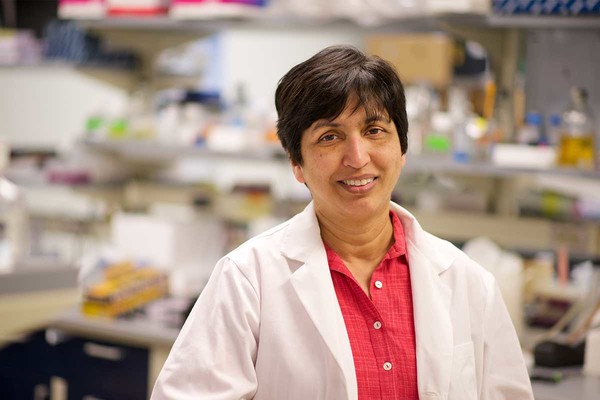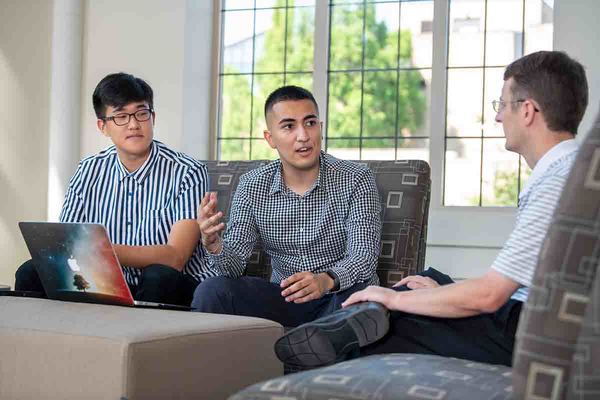Treating patients and families of those with rare diseases takes a gentle touch, persistence, a willingness to listen and additional time, according to four medical professionals who spoke recently about clinical care at the 11th Annual Conference on Advancing Rare Disease Research, Therapy and Patient Advocacy.
“Fast is not the best with rare diseases,” said Dr. Elizabeth Berry-Kravis ’79, a neurologist at Rush University Medical Center in Chicago, who notes that all new patients are entitled to an initial two-hour appointment. She’s been known to draw pictures explaining the medical condition on paper exam table sheets for those being introduced to a rare disease.
Dr. Mary Alice Reid ‘84, of Beacon Pediatrics, South Bend, is a proponent of the “one step at a time” method of education and advocacy for those first diagnosed with a rare disease, practicing a gentle approach, particularly for parents trying to cope with a child’s diagnosis. She said it is important to discover concerns, worries and possibly connect the family with other specialists or larger facilities such as the Mayo Clinic, for example. She and Berry-Kravis work together to treat one particular patient.
Seeing the situation from the patient’s point of view is important to Dr. Daniel Fulkerson, a pediatric neurologist also at Beacon. He also hopes to serve as someone who protects these vulnerable patients and families from predators. Some people take advantage of desperation by sending patients to other countries offering what amounts to scams and “snake oil” that can cause financial ruin and dangerous medical outcomes. “I say to them, ‘I don’t have a good feeling about this,’ he told conference attendees.

These rare diseases are the focus of Notre Dame’s Boler-Parseghian Center for Rare and Neglected Diseases, which brings together patients, researchers, physicians and students for the annual two-day conference at the end of February. Katsturi Haldar, director, said a rare disease is defined as a disease with less than 200,000 patents diagnosed. Diagnosis is often difficult and misdiagnosis is common, according to Haldar.
Challenges such as transportation, cost, and a lower-than-average educational level present themselves to those treating Amish and Mennonite populations, according to Jared Beasley, executive director of the Community Health Clinic in Topeka, Indiana. Because of the insular nature of this very specific population, patients are at an increased risk for rare genetic diseases. The “insular” nature results in the “founders effect,” meaning that the roots of the 150,000 Amish living in the United States trace back to a couple hundred European settlers.
“We want to be located as close as possible,” said Beasley, who noted that the Amish, Mennonite, and Anabaptists present themselves with several unique challenges. Amish buggies limit them to transportation within a 15-20 mile limit. Also, the cost of health care is difficult with below-average salaries, and their educational levels typically do not exceed eighth grade. Because one third of all Amish live in Northern Indiana, he said the Topeka facility allows patients access to health care.
“Our role is to ensure reinforcing empirically-supported practices” in what he called a “vulnerable community.”
Because this Amish community takes pride in being humble at all times, Beasley said it takes some time to educate patients about the need for them to express their thoughts and concerns. He also stressed the importance of “digging, digging and digging” to get the answers that are needed to solve the patients’ often very complex issues.
The four doctors answered a question from an attendee about how a government-run insurance program would impact treatment of rare diseases. Berry-Kravis said she thought that taking states out of Medicaid would allow all patients access to care at centers of excellence, regardless of where they lived. Reid concurred with that assessment, and said a national Medicaid system would allow a patient to be treated in Chicago or Michigan, even if they lived closest to Indianapolis, for example. “We’ll probably end up with a hybrid system,” she said, adding that cleaning up the health care system “is an emergency.”
“We need a basic level of care available for everybody,” said Fulkerson.
A popular part of the two-day conference is poster presentations by students. This year’s posters covered rare tumor biology, neurological disorders, musculoskeletal and other rare disorders, and Notre Dame student clubs. Conference attendees were encouraged to eat lunch and talk to students about their posters.

Ashby Martin, a senior in neuroscience, worked with Brian Hall, Lauren Milac, Bryan Min, and Danielle Terek to raise campus awareness about rare eye diseases such as leukocoria, an abnormal yellow or white eye glow that can be seen with flash photography. They worked with the “Know the Glow” foundation and developed a first of its kind campus campaign to educate students about the disease through classroom presentations, posters, a Facebook page, and glow in the dark t-shirts.
Eight percent of childhood blindness can be prevented if leukocoria is detected by the age of five, Martin said. He and his team encouraged students to go home at Thanksgiving armed with information about leukocoria. “We’d like to implement this at other campuses.”
Van Hippel Lindau disease was studied by students Leanna Fronckowiak ’20, a senior, Catherine Sport, ’21, Paul Wilkinson ’20. Von Hippel Lindau is an inherited disorder that results in the formation of cancerous and non-cancerous tumors and affects one in 36,000 people. The students’ poster included information about a father, aged 40, diagnosed as an adult. His son tested negative and his twin daughters tested positive. “They’re all doing well,” said Sport. “The father is a great advocate for getting more research for the disease.”
Originally published by at science.nd.edu on March 27, 2020.
